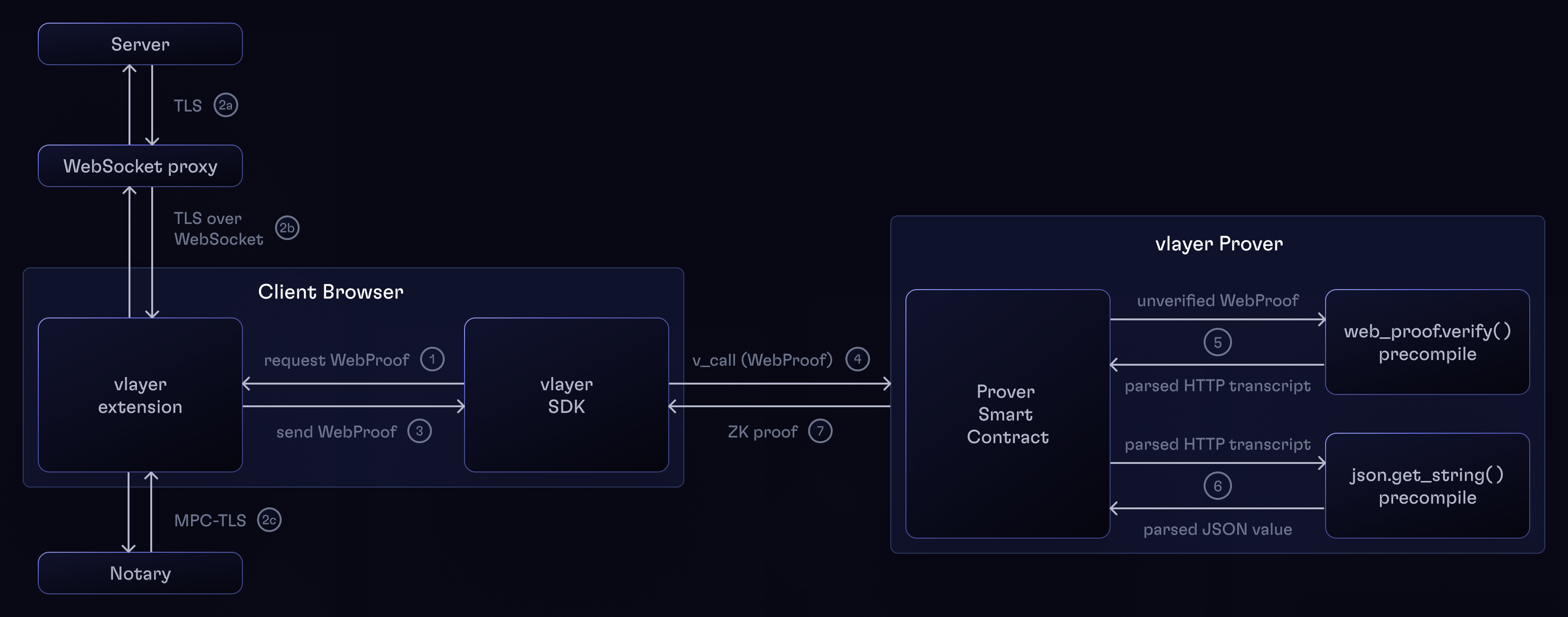High level architecture
The following diagram depicts the high-level architecture of how the Web Proof feature works:

Arrows on the diagram depict data flow between the actors (rectangles).
Generating and ZK-proving a Web Proof consists of the following steps:
- vlayer SDK (used in a webapp) requests a Web Proof from vlayer browser extension.
- The extension opens a TLS connection to a Server (2a) through a WebSocket proxy (2b), while conducting MPC-TLS session with the Notary (2c), generating a Web Proof of an HTTPS request to the Server. The WebSocket proxy is needed to provide the extension access to low-level details of the TLS handshake, which is normally not available within the browser, while the Notary acts as a trusted third party who certifies the transcript of the HTTPS request (without actually seeing it). For details of how the TLSN protocol works, please check TLSN documentation.
- The Web Proof is then sent back to vlayer SDK.
- vlayer SDK makes a
v_callto vlayer Prover server, including the Web Proof as calldata to Prover Smart Contract. - Prover Smart Contract calls
web_proof.verify()custom precompile (see Precompiles), which validates the Web Proof, parses the HTTP transcript and returns it to Prover Smart Contract. - Prover Smart Contract then calls
json.get_string()custom precompile (see Precompiles), which parses JSON response body from the HTTP transcript and returns value for the specified key. - When Prover Smart Contract execution successfully finishes, vlayer Prover returns ZK proof of the Contract execution back to the SDK. The ZK proof can then be verified on-chain.